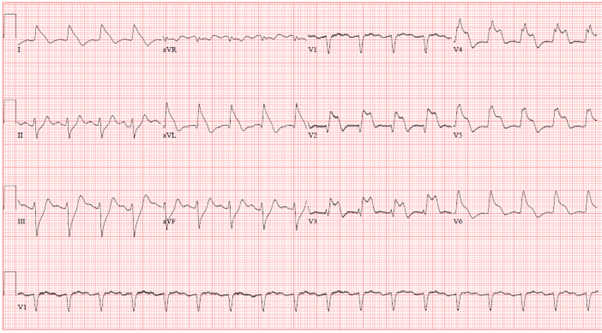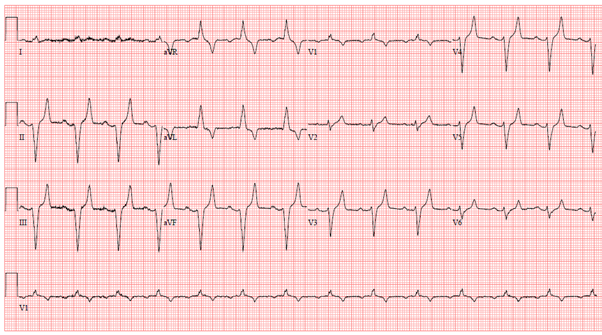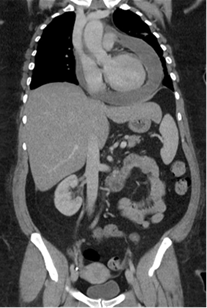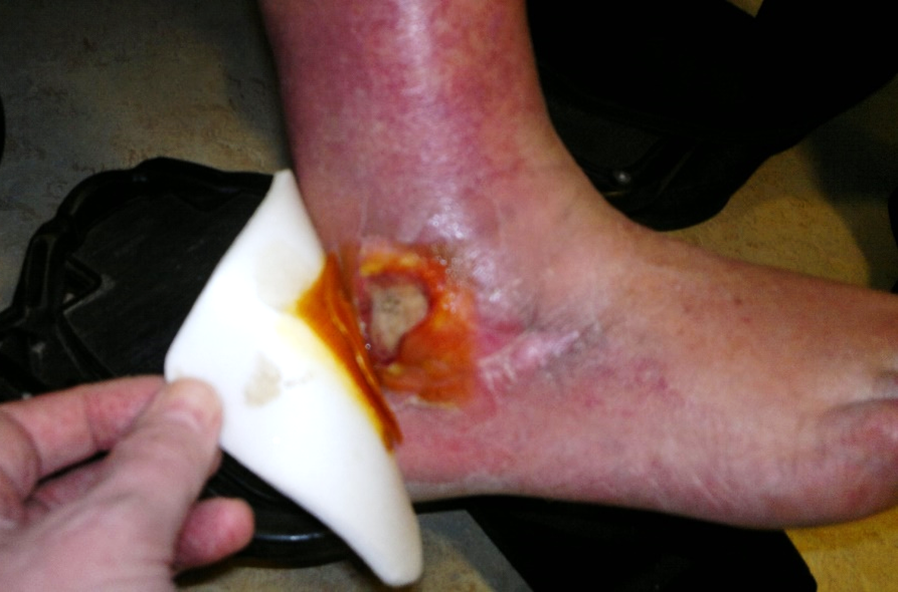
Quiz Summary
0 of 15 Questions completed
Questions:
Information
You have already completed the quiz before. Hence you can not start it again.
Quiz is loading…
You must sign in or sign up to start the quiz.
You must first complete the following:
Results
Results
0 of 15 Questions answered correctly
Your time:
Time has elapsed
You have reached 0 of 0 point(s), (0)
Earned Point(s): 0 of 0, (0)
0 Essay(s) Pending (Possible Point(s): 0)
Categories
- FRCEM SBA – ALS 0%
- FRCEM SBA – Cardiology 0%
- FRCEM SBA – Common Competences 0%
- FRCEM SBA – Dermatology 0%
- FRCEM SBA – End of life 0%
- FRCEM SBA – Endocrinology 0%
- FRCEM SBA – ENT 0%
- FRCEM SBA – Environmental 0%
- FRCEM SBA – Procedures 0%
- FRCEM SBA – Psychiatry 0%
- 1
- 2
- 3
- 4
- 5
- 6
- 7
- 8
- 9
- 10
- 11
- 12
- 13
- 14
- 15
- Current
- Review / Skip
- Answered
- Correct
- Incorrect
-
Question 1 of 15
1. Question
A young woman, who is visibly pregnant, has been struck by a vehicle while crossing the road. On arrival in the emergency department, she is unresponsive, with a blood pressure of 80/50 mmHg and a heart rate of 45 bpm. No fetal movements are palpable, and fetal heart sounds cannot be detected using a handheld Doppler device.
The trauma team agrees that a resuscitative hysterotomy should now be performed.
Which of the following statements regarding this procedure is most appropriate?
CorrectIncorrect -
Question 2 of 15
2. Question
A 74-year-old woman has been brought from the inpatient psychiatric unit in your hospital. She was eating when she was suddenly noticed to be agitated and to look blue. The staff put her in a wheelchair and brought her straight round to the emergency department. On arrival she is responsive and has stridor. She is taken to the resuscitation area. Monitoring shows a heart rate of 54 bpm, blood pressure of 82 systolic and oxygen saturation of 78%. This improves to 84% with facemask oxygen.
She continues to deteriorate and becomes unconscious, pale with an impalpable pulse, heart rate of 62 per minute on the monitor and un-recordable blood pressure and saturation.
Which is the most appropriate next step?
CorrectIncorrect -
Question 3 of 15
3. Question
A 70-year-old woman is brought to the emergency department with a two-day history of sore throat and progressively noisy breathing. Her husband reports that she was able to speak and drink yesterday, but today she has become much worse. On arrival, she appears unwell and is adopting the picture shown in the image. She has inspiratory stridor, but is not cyanosed.
Her observations are:
Heart rate: 105 bpm, Respiratory rate: 24 breaths/min, Oxygen saturation: 92% on room air,
Blood pressure: 106/74 mmHg
What is the most likely cause of her stridor?
CorrectIncorrect -
Question 4 of 15
4. Question
A 74-year-old man is brought to the emergency department with sudden-onset breathlessness. He was discharged 10 days ago following treatment for an acute coronary syndrome. On arrival, he is severely dyspnoeic with widespread crackles on auscultation and bilateral pitting oedema to the knees.
His observations are:
Temperature: 36.3°C, Heart rate: 122 bpm, Blood pressure: 129/68 mmHg, Respiratory rate: 32 breaths/min, Oxygen saturation: 89% on high-flow facemask oxygen
An arterial blood gas (on facemask oxygen) shows:
pH: 7.17, pO₂: 8.6 kPa, pCO₂: 4.8 kPa, Bicarbonate 14 mmol/l.
What is the most appropriate initial treatment?
CorrectIncorrect -
Question 5 of 15
5. Question
A 69-year-old man presents to a small, remote emergency department with sudden-onset chest pain that began 3 hours ago. He is sweaty and nauseated. His ECG is shown below.

There is no on-site cardiac catheter lab, and the nearest PCI centre is a two-hour ambulance transfer away.
His observations are:
- Temperature: 36.4°C
- Heart rate: 108 bpm
- Blood pressure: 123/82 mmHg
- Respiratory rate: 18 breaths/min
- Oxygen saturation: 98% on room air
In addition to aspirin and symptom control, what is the most appropriate next step?
CorrectIncorrect -
Question 6 of 15
6. Question
An 83-year-old woman is brought to the emergency department by ambulance, complaining of feeling generally unwell for several days. An ECG recorded on arrival is shown.

A few minutes later, she suffers a sudden cardiac arrest.
Which of the following would be the most appropriate first drug treatment?
CorrectIncorrect -
Question 7 of 15
7. Question
A 46-year-old woman presents to the emergency department with worsening shortness of breath. She reports a six-week history of persistent cough and has been treated with multiple courses of oral antibiotics in the community.
Her observations are:
Temperature: 37.6°C, Heart rate: 106 bpm, Blood pressure: 104/68 mmHg, Respiratory rate: 20 breaths/min, Oxygen saturation: 92% on room air.
A CT pulmonary angiogram is performed to investigate possible pulmonary embolism. A reconstructed coronal image is shown.

What is the most likely diagnosis?
CorrectIncorrect -
Question 8 of 15
8. Question
An elderly man is found collapsed in a park. An ambulance crew arrives and finds him in asystole. Cardiopulmonary resuscitation (CPR) is commenced immediately.
CPR is continued for 10 minutes en route to hospital and has now been ongoing for a further 10 minutes in the emergency department. There has been no return of spontaneous circulation (ROSC), the patient remains in asystole, and there are no obvious reversible causes.
The resuscitation team ask whether CPR should now be stopped.
Which of the following would be the strongest justification for stopping CPR at this point?
CorrectIncorrect -
Question 9 of 15
9. Question
A 26-year-old man is brought to the emergency department after collapsing at a building site, where he had been working for several hours in very hot weather. Colleagues report that he became increasingly confused and agitated before collapsing. He is known to the ED due to previous presentations related to illicit drug use and behavioural disturbance.
On arrival, he is confused, agitated, and tachypnoeic.
Observations:
Temperature: 41.2°C
Heart rate: 128 bpm
Blood pressure: 96/54 mmHg
Respiratory rate: 26 breaths/min
Oxygen saturation: 97% on room air
Significant laboratory results:
Creatinine: 145 µmol/L (Ref range 60-110)
Creatine kinase (CK): 1650 IU/L (Ref range <200)
White cell count: 11.2 × 10⁹/L (Ref range 4-11)
What is the most likely diagnosis?
CorrectIncorrect -
Question 10 of 15
10. Question
An agitated young man is brought to the emergency department by police. He is believed to have taken a large quantity of amphetamines and became extremely agitated and aggressive. He is now on the floor in the resuscitation area, face down, being physically restrained by multiple officers. He is hot to touch, not responding to verbal commands, and continues to struggle forcefully against the restraint.
Which of the following complications is most significant in this situation?CorrectIncorrect -
Question 11 of 15
11. Question
An 8-year-old girl is brought to the emergency department after having a seizure at school. The seizure has resolved, and she has made a full recovery. She is alert, eating and drinking, and clinically well enough to be discharged.
A man identifying himself as the girl’s stepfather has arrived. He states that he has been caring for her since her mother died three months ago. He does not know who the biological father is, as the child’s parents separated years ago.
Which of the following is the most appropriate next step before agreeing a management plan?
CorrectIncorrect -
Question 12 of 15
12. Question
An 83-year-old woman is referred to the emergency department because a swab from a longstanding leg ulcer has grown coliform bacteria. The ulcer has been present for two months and is regularly dressed by the practice nurse. The swab was taken due to slow healing.

The patient reports no pain, has no fever, and on examination, the ulcer appears clean with no surrounding erythema or signs of cellulitis.
What is the most appropriate response to the swab result?
CorrectIncorrect -
Question 13 of 15
13. Question
A 74-year-old woman with end-stage metastatic breast cancer is brought to the emergency department by ambulance. She is unconscious and clearly in the final hours of life. The nursing team report that she has developed loud, moist respiratory sounds (“death rattle”), which are distressing to her family. They ask for medication to help manage this symptom.
Which of the following is the most appropriate medication to prescribe?
CorrectIncorrect -
Question 14 of 15
14. Question
A 67-year-old man with advanced lung cancer is brought to the emergency department with pneumonia. He is now confused and lacks capacity to make decisions. His wife and brother say that he had previously made clear that he would not want further treatment, including antibiotics, if his cancer progressed. They add that a family member is on their way with a written statement expressing his wishes.
Which of the following is the most appropriate course of action?
CorrectIncorrect -
Question 15 of 15
15. Question
A 78-year-old woman is brought to the emergency department by her daughter. She is nauseated, confused, and has not been taking her usual medications for several days. She has a background history of polymyalgia rheumatica treated with long-term corticosteroids.
On examination, she appears confused and hypotensive.
Observations:
Heart rate: 96 bpm, Blood pressure: 72/48 mmHg, Respiratory rate: 22, Temperature: 35.8°C, SpO₂: 95% on air
An Addisonian crisis is suspected, and she is given 100 mg intravenous hydrocortisone.
What is the most appropriate next step in her treatment?
CorrectIncorrect

